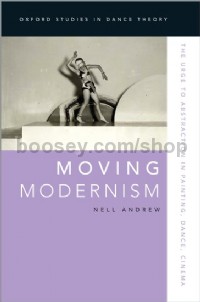Moving Modernism (Hardcover)
Moving Modernism (Hardcover)
* Estimated price converted from UK retail price
In early twentieth-century Europe, the watershed developments of pictorial abstraction, modern dance, and cinema coincided to shift the artistic landscape and the future of modern art. In Moving Modernism, Nell Andrew challenges assumptions about modernist abstraction and its appearance in the field of painting. By recovering performances, methods, and circles of aesthetic influence for avant-garde dance pioneers and filmmakers from the turn of the century to the interwar period — including dancer Loïe Fuller, who presented to symbolist artists the possibility of prolonged or suspended vision; Valentine de Saint-Point, whose radical dance paralleled the abstractions of cubo-futurist painting; Sophie Taeuber and her Dada dance; the Belgian "pure plastics" choreographer known as Akarova; and the dance-like cinema of Germaine Dulac — Andrew demonstrates that abstraction was deployed not only as modernist form but as an apparatus of creation, perception, and reception across artistic media.




